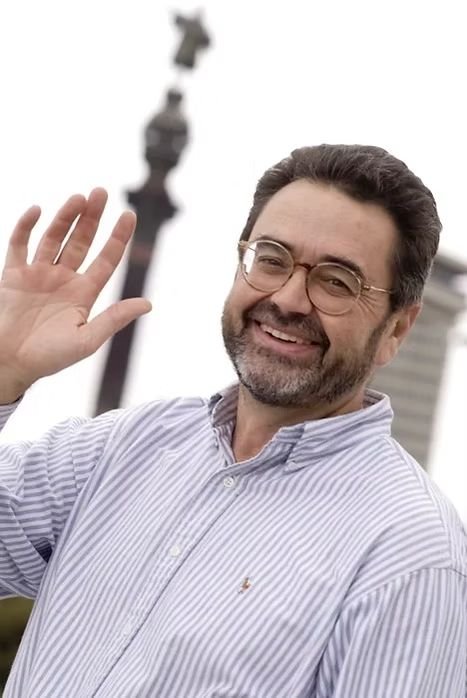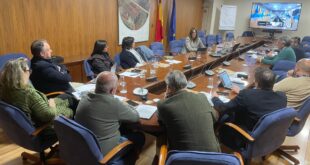
Was Christopher Columbus a Sefardic Jew born in the Iberian Peninsula, Genoese, or Italian?
The answer to that question is provided by Francesc Albardaner, an independent author and researcher, in a documentary titled Colón ADN, su verdadero origen, produced by RTVE of Spain and released on October 12.
The purpose of the documentary is to explain the results of the studies conducted on Columbus by experts from the University of Granada, in collaboration with several foreign universities.
The genetic study of the explorer, directed by José Antonio Llorente, professor of Forensic Medicine at the University of Granada, began in 2003, when he and his team compared the DNA of remains in Columbus’s tomb in the Seville Cathedral with those of his son Hernando and his brother Diego, also buried in the same church.
There is speculation that the remains in the Cathedral of Santo Domingo, Dominican Republic, may also be his. Columbus died in Valladolid, Spain, on May 20, 1506.
In 2004, the Discovery Channel documented Llorente’s research step by step in a documentary titled Columbus: Secrets from the Grave.
The research was suspended due to extensive bone destruction, without yielding concrete results.
In 2020, RTVE decided to follow up on the scientist’s work and produced Colón ADN, su verdadero origen. According to critics of the documentary, the study’s results are partial and do not offer a definitive answer about his origins. They hope Llorente will publish his analysis in scientific publications to give it greater credibility.
After conducting a genetic analysis of Columbus’s DNA, Llorente believes the genetic markers indicate a high probability that he was a Sephardic Jew born in the western Mediterranean. Albardaner agrees with Llorente’s conclusions.
Born in Barcelona, Albardaner, who has been studying the explorer’s life since 1986, recently discussed his theories about the origins of Columbus on e-Sefarad, a platform dedicated to Sephardic culture based in Buenos Aires, and at the Centro Sefarad Israel in Madrid.
His research has taken him to various archives in Catalonia and other parts of Spain, and abroad. He is the author of the book El origen catalán de Colón: Ciencia histórica o fanatismo (The Catalan Origin of Columbus: Historical Science or Fanaticism), published in 2012, and of countless articles in English, Spanish, and Catalan on the explorer.
He is also a member of the Catalan Society of Historical Studies and the Catalan Institute of Genealogy and Heraldry.
 Old meets new
Old meets new
The conclusions of Albardaner’s research on the admiral’s Jewish origins clash with what he calls «the orthodox» or «Genovist» theory, which is the most universally accepted and defended mostly by Italian historians, such as Pablo Emilio Taviano and Gianni Granzotto.
According to this theory, his name was Cristoforo Colombo. He was born in Genoa, in the Republic of Genoa, approximately between August and October of 1451 to a Genoese father named Domenico Colombo. His mother was Susanna Fontanarossa, and he had three brothers: Giacommo, or Diego, Bartolomeo and Giovanni, and a sister, Bianchinetta. The family earned their living by weaving wool.
Columbus completed his early education at the Pico di Pavia school in Genoa, which was attended by the children of wool weavers. He spent part of his youth there and lived for a time in Savona, not far from that city.
“The opinion of Italian historians who have written about him is that he was a believing, pure-blooded Catholic,” Albardaner said. “That is the image that has come down to us.”
Despite such convincing statements, there has always been a degree of intrigue and suspicion surrounding the navigator, according to Albardaner.
It is incorrect to call it “Spanish” because Spain, he added, did not exist as a nation at the time of the discovery, as the Iberian Peninsula was made up of a mosaic of kingdoms that were unified only with the Nueva Planta decrees of 1716, three centuries after the marriage of King Ferdinand of the Kingdom of Aragon and Queen Isabella of the Kingdom of Castile in 1469. Both were called “Catholic Monarchs.”
“Columbus discovered America for Castile and León, not for Spain, which did not exist during his lifetime,” Albardaner said. “Pope Alexander VI, an Aragonese, gifted the New World to Castile, and to the Catholic Monarchs and their descendants thanks to a papal bull.”
As a consequence, the other kingdoms of the Peninsula were excluded from commercial access to the lands of America, which Queen Isabel would confirm in her will. Albardaner believes the explorer was born and raised in Valencia, an independent kingdom within the Crown of Aragon, and his nationality was Valencian.
Of all the eight theories about the explorer’s origins presented in Columbus DNA, Albardaner’s was not excluded from genetic analysis, as were the others. “So far, it’s the winning theory, and it’s very difficult for the Italians to challenge it,” he said.
It cannot be said that Columbus was Genoese because there were no Jews in Genoa, and those who came to the city to trade or were passing through were only allowed to stay for three days. «Nor can it be said that he was Italian because Italy was only established as a nation in 1861,» Albardaner said.
Suspicions and signs
Already during Columbus’s lifetime there were suspicions that he concealed a Jewish culture and religion, although in public he acted like a «perfect Christian,» according to the researcher.
The open rejection of his origin is illustrated by a letter sent from Santo Domingo by the Franciscan Juan de Trassierra to Cardinal and inquisitor Francisco de Cisneros in 1500, in which he asks him to «ensure that neither he nor any of his nation come to these islands.»
Already in the Middle Ages Jews were considered a «nation,» and the letter was clearly addressed to them, according to Albardaner.
The researcher cites the following facts as proof that the admiral was Jewish:
- «My father’s ancestors were of the royal blood of Jerusalem,» wrote Columbus’s son, Hernando, in his biography, written in 1535 and published in 1571.
- Letter from Columbus to the inquisitor Diego de Deza: «Give me whatever name you wish, for in the end David, a very wise king, guarded sheep and was later made king of Jerusalem; I am a servant of that same Lord who put David in that state.»
- In a marginal note to a book by Pope Pius II, Historia Rerum, Columbus uses the term «Holy House» (in Hebrew, Beit Kodesh) to refer to the two temples in Jerusalem, destroyed on the 9th of Av, but at different times.
- This, Albardaner said, is evident that he had a Jewish mentality, typical of someone who had received a Jewish education since childhood. Other religions do not use these terms to refer to these temples.
- On March 31, 1492, the Catholic Monarchs expelled the Jews from the territories of Castile and the Catalan-Aragonese Crown, and gave them until July 31 to leave.
- Their departure was extended to August 2, or the 9th of Av on the Jewish calendar, which Jews consider an unlucky day due to the many tragedies that have happened to them throughout history on that day, and they refrain from traveling or conducting business.
- The admiral was also scheduled to set sail on the 2nd, but postponed his voyage until the following day. “If he was Jewish, he would never embark on such an important voyage on a day of bad omen,” according to Albardaner.
- There are no references to the New Testament in Columbus’s writings, but there are many to the Old Testament, a fundamental text of Jewish law and history.
- The people who most believed in the navigator’s ideas, and with whom he developed close friendships and supported him financially, were conversos (Jews converted to Catholicism), many of whom were part of the Crown of Aragon.
- Two of them were Luis de Santangel, escribano de ración, or minister of finance, and Gabriel Sánchez, treasurer general.
- Two monograms, believed to be the Hebrew letters bet and hei, appear in the upper left corner of several letters addressed to his eldest son, Diego.
- They would therefore correspond to the initials of the words baruch hashem (Blessed be God) or bezrat hashem (With the help of God). «If this is true, it is evident that Columbus followed a Jewish tradition and, furthermore, that he knew how to write cursive Hebrew, said Albardaner.»
Fuente: Gentileza de Daniel Santacruz – kolsefardim.net
 eSefarad Noticias del Mundo Sefaradi
eSefarad Noticias del Mundo Sefaradi

